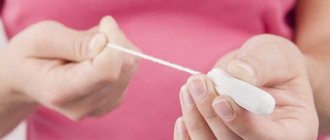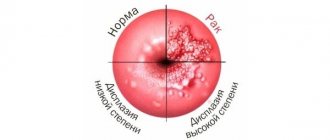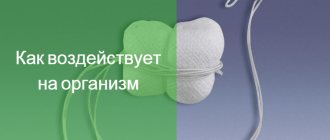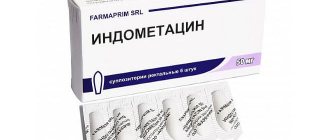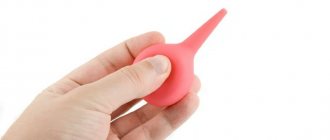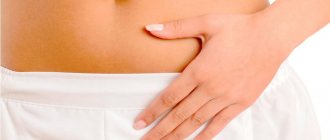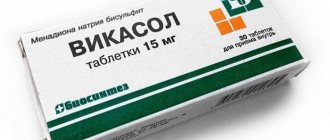Sea buckthorn oil has beneficial properties. Tampons with sea buckthorn oil are an effective means of combating various gynecological diseases.
Sea buckthorn is a proven folk remedy with healing properties. It serves as a source of many useful substances such as magnesium, silicon, nickel, iron. In addition, sea buckthorn contains vitamins A, B, C and palmitic acid. That is why, from the middle of the last century, sea buckthorn oil began to be actively used in gynecology.
What are the healing properties of the oil?
Sea buckthorn oil is produced from different parts of the fruit:
- whole fruits;
- seeds;
- pulp.
The resulting oils have different properties. In the food industry they use a product made from the seeds, from the pulp - it is suitable for the treatment of eye diseases, gastrointestinal tract, and is also widely used in cosmetology.
The oil made from whole fruits is of greatest value. It has a number of medicinal properties:
- Effective in the treatment of diseases and injuries of the skin: burns, frostbite. Accelerates wound healing, promotes skin regeneration.
- In the treatment of ENT organs, sea buckthorn has a powerful anti-inflammatory effect.
- Used in the treatment of eye diseases: night blindness, corneal defects. Improves blood circulation in the eyes, helps restore the corneal layer.
- Positively affects coronary vessels, eliminates atherosclerotic plaques.
- Has a bactericidal effect against stomach ulcers and gastritis.
- Accelerates lipid metabolism, which leads to a decrease in blood cholesterol.
- For gynecological diseases, it restores the beneficial microflora of the genital organs and normalizes hormonal levels.
- Increases skin elasticity, eliminates dryness, peeling, acne.
- For neoplasms it is used as an antitumor agent.
Sea buckthorn oil has anti-inflammatory properties.
All the healing properties of the oil are due to its rich composition.
| Chemical composition | Contents per 100 ml | % of daily value |
| IN 1 | 0.04 | 2 |
| AT 2 | 0.05 | 2.3 |
| AT 5 | 0.15 | 4 |
| AT 6 | 0.11 | 6 |
| AT 9 | 9 | 2 |
| WITH | 200 | 220 |
| E | 5 | 33 |
| Beta tocopherol | 0.75 | 5 |
| Delta tocopherol | 0.4 | 2.8 |
| Gamma tocopherol | 4.4 | 29.5 |
| RR | 0.5 | 3 |
| TO | 1.5 | 1.2 |
| Beta carotene | 430-22700 | 230 |
| Lutein, zeaxanthin | 1400-6700 | 85 |
| Lycopene | 4000 | 80 |
| Kholin | 21 | 4.2 |
| Potassium | 190 | 8 |
| Calcium | 55 | 3 |
| Magnesium | 31.3 | 8 |
| Sodium | 4 | 0.4 |
| Phosphorus | 9-40 | 3.8 |
| Sulfur | 5 | 0.5 |
| Iron | 6.5 | 27 |
| Iodine | 1.4 | 0.7 |
| Omega-3 | 1.76 | 175 |
| Omega-6 | 1.84 | 18 |
Properties and composition
It received such recognition because of its composition:
- It contains a large amount of vitamins (A, B, C, E).
- Inflammatory and destructive processes of cells in the body are suppressed by vitamin A and E groups.
- Vitamin C contained in sea buckthorn has a special feature. The berries do not contain the enzyme ascorbic acidase, so even after heat treatment, ascorbic acid is not destroyed. And hot sea buckthorn tea contains a lot of ascorbic acid.
- Vitamins PP and vitamin K, present in berries, affect blood clotting and form stable DNA.
- Bioflavonoids: quercetin and kaemferol, which are contained in the plant, fight cancer cells, destroying them.
The collected berries should be stored dried or frozen (read how to properly care for sea buckthorn). Long-term storage in the form of jam does not ensure the preservation of all vitamins, which are destroyed under the influence of high temperature.
Important! The medicinal properties of sea buckthorn jam are described in detail here.
The fatty acids obtained by crushing the berries are called sea buckthorn oil. Due to its rich composition of nutrients and vitamins, sea buckthorn is used in the treatment and prevention of female diseases.
The high vitamin C content keeps blood vessels healthy. Plaques do not form on them and the vessels do not become fragile.
This product has a rare combination of polyunsaturated omega fatty acids - omega 3, omega 6 and omega 9. It contains large quantities of fat-soluble vitamins A, beta carotenes and retinoids. Properly pressed oil has a reddish or yellow-orange tint. The percentage concentration of vitamin C in sea buckthorn oil is 10 times higher compared to lemon.
When choosing sea buckthorn oil, you need to ensure that it is obtained from cold-pressed berries, so that the medicinal properties are preserved as much as possible. Because some vitamins are destroyed after heat treatment. Sometimes you can find sea buckthorn oil squeezed from the seeds of the plant. They are characterized by a lower content of beta keratins, while it has a higher content of polyunsaturated fatty acids. But still, whole sea buckthorn oil is considered to have great beneficial qualities.
Remember! The prepared oil must be stored in a closed container and in a dark place. Because it can oxidize due to the content of unsaturated fatty acids, which will lead to the product becoming rancid. It is better to store it in the refrigerator.
In 1946, research was conducted on the use of sea buckthorn oil in gynecology. Observations of women with cervical erosion found that the disease was successfully treated and did not cause side effects.
Contraindications for use
There were practically no contraindications for its use. Even people with gastrointestinal problems could use the product without harm to their health.
It is impossible to treat with oil only for women with personal intolerance to sea buckthorn, as well as those with acute inflammatory diseases of the liver and pancreas. If you have diarrhea, it is not advisable to take sea buckthorn oil orally.
How to use for fibroids and erosion
Sea buckthorn oil can be purchased at a pharmacy or prepared at home. The preparation process is very simple: collect ripe fruits, sort and wash. Place the remaining pulp after squeezing into a juicer, transfer it to a glass container and add sunflower oil at the rate of 0.5 g of oil per 3 cups of cake. Cover with a lid and place in a cool, dark place for 5-6 days. Then strain and use.
Oil used for uterine fibroids
In gynecology, tampons with sea buckthorn oil are used to treat fibroids. Myoma is a hormone-dependent tumor; sea buckthorn has a gentle effect on hormonal levels, restoring its balance. After the course of treatment, women note an improvement in their general condition, in some cases a decrease in the volume of education.
For cervical erosion, the product has an anti-inflammatory effect, promotes healing of the damaged surface, accelerates tissue regeneration, and normalizes microflora.
Treatment should begin after menstruation. Before the procedure, you need to douche with a decoction of chamomile or calendula. Erosion is often accompanied by copious discharge; douching will help eliminate it and the medicine will be better absorbed into the walls of the genital organs. A pre-made tampon is moistened with oil and inserted into the vagina 2 times a day. Tampons with oil are used for erosion for two weeks, for fibroids up to 1 month.
How to properly make tampons with sea buckthorn oil
It is impossible to use ordinary hygienic tampons for medicinal purposes, since they are designed to absorb liquid, but medicinal tampons have the opposite task - to give away the product with which they are soaked.
There are no secrets for making tampons with sea buckthorn oil, so every woman can make them. Let's pay attention to just a few points.
- Decide on the size of the tampon: it should be slightly larger than the one you use during menstruation, but not too large so that there is no discomfort or pain after insertion.
- Use only sterile gauze, bandages and cotton wool.
- Soak the tampon with oil or a product based on it generously so that the beneficial substances of sea buckthorn have the expected effect.
- Before inserting a tampon, be sure to douche.
Instructions for making a tampon
Lay the bandage on a flat surface, twist a piece of cotton wool into a thick oblong rope, then wrap it in the bandage, leaving a long tip, with which you can remove the tampon after completing the procedure.
In addition to oblong tampons, round ones are also used. Outwardly, they resemble a comet (a ball with a tail). Roll a thick ball out of cotton wool, place it between layers of gauze, and then tie it with a thick thread or tie the “head” with one of the ends of the bandage.
Insert the tampon carefully, just as you would insert a regular menstrual hygiene product. If you experience discomfort or pain after insertion, remove the tampon and reinsert it. If it still hurts, remove the tampon, make a new smaller one, and insert it.
If deep insertion is required, the tampon is made on a pencil, which is pulled out after insertion. Use extreme caution when using this method.
How tampons are made to treat thrush and inflammation
Sea buckthorn has proven itself in the treatment of fungal infections of the genital organs. Thanks to its antiseptic and anti-inflammatory properties, it quickly eliminates the unpleasant symptoms of thrush. Local immunity increases and the proliferation of Candida fungi stops. Thrush often recurs during pregnancy, so expectant mothers are advised to treat the infection with a sea buckthorn product.
The product helps well with colpitis and other inflammatory pathologies of the reproductive system
Oil in combination with medications is used to treat inflammatory diseases such as cervicitis, colpitis, endometritis. It improves blood circulation and relieves swelling of inflamed tissues. Suppresses pathogenic microorganisms, promotes the healing of microtraumas caused by severe inflammation, nourishes and moisturizes the vaginal walls.
To treat these diseases, the drug is used as a local remedy. Making tampons with oil is very simple:
- To make tampons, you need medical gloves, sterile cotton wool, gauze or a bandage.
- Wash your hands and wear gloves before making.
- Form a cylinder or ball with a diameter of 3 cm from cotton wool.
- Cut a piece 15 cm long from the bandage.
- Fold the bandage strip in half and place a cotton ball in the center.
- Wrap it tightly with a bandage, tie the loose ends with a thick thread (pre-treated with an antiseptic) or a thin gauze strip, so that part of the thread remains free.
- Apply the medicine to the tampon and insert it into the vagina for 12 hours.
The duration of treatment is 10-14 days, tampons are inserted in the morning and evening. The oil is quite liquid, so it is necessary to protect the underwear with panty liners.
Can pregnant women use it?
This question worries many pregnant women. Using tampons soaked in sea buckthorn oil during pregnancy is not only possible, but also necessary. It is a completely natural substance and does not contain preservatives, toxins and other substances that can harm a pregnant woman, and does not have an irritating effect.
Tampons are prescribed by a specialist to pregnant women as a drug to maintain the health of the expectant mother and prevent various diseases. Moreover, the sea buckthorn substance contained in the personal hygiene product will protect a woman not only from gynecological, but also from other diseases.
How oil is used to treat cystitis and herpes
In the treatment of cystitis, the oil is used for preparing baths or instillation. Oil baths quickly relieve itching and inflammation, relief occurs after the first procedure. To prepare them, pour warm water at 38-39 degrees into a basin and add 40 ml of the medicine and stir. Then they sit in the basin so that the genitals are completely submerged in water for 5-7 minutes.
Sea buckthorn oil can also be used for cystitis
Instillation is carried out in a hospital setting and involves the infusion of sterile oil into the bladder cavity. The procedure lasts about 15 minutes, the oil must be kept inside for about 1 hour. Sea buckthorn promotes healing of the mucous membrane, relieves irritation and destroys infection.
The product has immunostimulating and antiviral properties, therefore it is often used to treat herpes infections. Vitamin E contained in fruits accelerates the healing of erosions and tissue regeneration. It is used both for ordinary herpes on the lips and for the genital form. The concentrate is applied to the affected area 4-5 times a day using a cotton swab.
Turmeric for uterine fibroids
It is generally accepted that in case of uterine disease, the spice has a pronounced therapeutic effect, which is determined by the phyto-analog of a hormone such as estrogen contained in it. Therefore, it is indicated in the treatment of a large number of diseases in gynecology. The spice allows you to normalize the functioning of the reproductive system and establish hormonal balance in the body.
In addition, the product helps relieve pain caused by the disease due to its antispasmodic effect.
You can speed up the process of resorption of cancer cells using a dietary supplement, which includes:
- licorice rhizome – 1.5 parts;
- turmeric – 1 part;
- cinnamon – 4 parts;
- peach seeds – 5 parts.
INTERESTING fact: Traditional recipes for the treatment of uterine fibroids
How to take turmeric for fibroids: you need to consume a mixture of the above components, 1 tsp. before starting a meal, washing down the supplement with a small amount of water.
Simple ways to treat complex diseases:
Horseradish is the only plant that can draw salt through the pores of the skin. Do it - you won't regret it! Horseradish leaves will help get rid of all the salt that has accumulated in the body and can lead to painful salt deposits...Check... Read more
Never give an antibiotic BEFORE you get a blood test with a leukemia formula. Remember, write to yourself somewhere in a visible place!!! INCREASED leukocytes, ESR, lymphocytes - VIRUS. INCREASED leukocytes, ESR, segmented and rod neutrophils... Read more
What 1 glass of this drink will do to your liver can be called a real miracle! If the liver is overloaded or does not work well, we immediately feel it. Weakness, lack of energy, dizziness, nausea, pain in the right hypochondrium, problems with food... Read more
Dandelion is the elixir of life, and what a medicine!!! The medicinal dandelion is an unpretentious plant, but contains a good half of the chemical elements of the periodic table. Sodium, potassium, manganese, magnesium, and... Read more
Seeds that repair tendons and reduce joint pain. We treat osteoporosis and osteoarthritis. Osteoarthritis of the knee is a type of degenerative joint disease or arthritis that is localized in the knee and can cause pain and di... Read more
What other indications for use are there?
Sea buckthorn is most popular in dermatology and cosmetology. It is used to treat the following diseases:
- psoriasis;
- dermatitis;
- teenage acne;
- diaper rash;
- eczema;
- hair loss.
This video will help you choose a method of treating sea buckthorn for cervical erosion:
The oil saturates the skin with moisture, nourishes, controls the functioning of the sebaceous glands, and has an antiseptic effect. For skin diseases, lubricate damaged areas several times a day. It is pre-mixed with Vaseline or other oils.
Due to its healing properties, sea buckthorn is used to eliminate bedsores during uterine prolapse. The operation to realign the organ is carried out only after the bedsores have completely healed. For this, doctors prescribe bed rest and douching. When the uterus prolapses, tampons with oil are generously soaked and inserted under the base of the bedsore. Treatment lasts 2-3 weeks.
Also, tampons with sea buckthorn oil showed good therapeutic results for cervical hyperkeratosis. The disease is characterized by the proliferation of fibrous and connective tissue. Erosion and growths form on the neck, which can develop into malignant formations.
The oil promotes the healing of erosions, stimulates local immunity, and has an antitumor effect.
The use of sea buckthorn oil in gynecology
The most disappointing fact here remains the impossibility of preventing erosion, because the reasons for its appearance and development are very diverse. A weakened immune system and irregularities in the menstrual cycle due to hormonal imbalance can also do a bad job here.
The onset of sexual activity in early years can also cause erosion, as can a frequent and careless change of sexual partners, when the situation simply cannot be avoided without constant disturbances of the vaginal microflora.
Another reason may be infectious and viral diseases acquired through sexual contact. The constant attack of the cervix by pathogenic bacteria is fraught with the formation of erosive lesions on the latter. Is it worth mentioning the lack of personal intimate hygiene?
The problem leading to erosion can be the proliferation of the epithelium lining the inside of the cervix. By its nature, this type of epithelium is not adapted to the acidic environment of the vagina, and therefore, growing and going beyond its location, it begins to undergo constant exposure to this very environment.
During this process, an erosive lesion is formed at the entrance to the cervix, which is naturally capable of healing with coarser cells of new tissue. As a result, it is this new tissue that becomes a possible focus for the growth of malignant neoplasms. It turns out that this is not the most harmless disease, the course of which can be left to chance.
There are several types of erosion removal. Some of them are very painful, while others cause virtually no pain or other unpleasant sensations, but all of them are carried out in a specialist’s office and leave behind more or less noticeable scars. There is a natural remedy that will help both in the treatment of erosion and in healing after surgery.
Sea buckthorn oil is rich in retinol and tocopherol, which is why it has a rich orange color. The content of astringents, phylloquinone and folic acid determines the healing properties of the oil. In addition, sea buckthorn oil is credited with analgesic, anti-inflammatory, rejuvenating and tonic effects.
Contraindications
When using sea buckthorn oil externally in gynecology, an allergic reaction may be prohibited. However, when taken orally, the doctor will not approve this remedy if you have the following diseases:
- hepatitis;
- cholelithiasis;
- cholecystitis;
- acute pancreatitis;
- immunodeficiency (with caution here).
In these cases, taking the oil internally may cause diarrhea. When used externally, these diseases will not interfere, but rarely there may be a reaction in the form of a burning sensation. If this happens, the drug should be discontinued.
Contraindications and side effects
Despite the fact that sea buckthorn oil contains exclusively natural ingredients and has no side effects, there are contraindications that must be taken into account before starting to use this product.
For patients with hypersensitivity and people who are intolerant to one of the components of the oil, the use of the product is strictly contraindicated. Treatment is impossible if any organ or organ system in the body is inflamed.
And before starting use, you should consult a specialist.
Sea buckthorn oil is a useful substance that has beneficial properties and can relieve many diseases. It is widely used for the treatment of gynecological diseases as a substance for impregnation of personal hygiene products.
The oil does not contain toxic or other harmful substances that can harm a woman’s body. The substance actively heals wounds, does not cause allergic reactions and has no side effects.
Tampons soaked in sea buckthorn suspension are an effective remedy for mild gynecological diseases, chronic diseases, and can serve as an aid in the fight against acute diseases.
When deciding to use sea buckthorn tampons, the patient should immediately become familiar with the main beneficial properties that are so important in gynecology:
- rapid tissue healing;
- relieving inflammation;
- improved blood circulation;
- stabilization of lipid metabolism;
- disinfecting effect;
- rejuvenation of the body.
All these positive effects help support the body in the following diseases:
- endometritis;
- various inflammatory processes;
- candidiasis;
- endometriosis;
- problematic recovery after childbirth;
- recovery after surgery;
- uterine fibroids;
- cervicitis;
- cervical erosion;
- vaginal dysbiosis;
- bacterial vaginitis;
- genital herpes;
- ovarian cyst;
- with polycystic disease.
But first you need to see a doctor who will prescribe a comprehensive treatment for a specific pathology, because folk methods alone cannot do it.
Side effects
Sea buckthorn oil has been used for quite a long time and has proven itself to be a safe remedy that is suitable for both pregnant women and infants. However, even sea buckthorn oil has some contraindications.
- Firstly, you should not use sea buckthorn oil internally if you are found to be individually intolerant of it.
- Secondly, sea buckthorn oil should not be used internally during an exacerbation of inflammatory diseases of the liver, gallbladder and pancreas, when any fat is strictly prohibited. The list of such diseases includes, among other things, cholelithiasis, pancreatitis, cholecystitis, cholangitis.
- Thirdly, you should not use sea buckthorn oil if you have diarrhea.
In addition, if any allergic reactions occur as a result of using sea buckthorn oil (either internal or external), the procedures should be stopped immediately.
Do not forget that the shelf life of sea buckthorn oil is limited and is only 24 months.
The oil is rich in minerals, antioxidants and natural antibiotics, so its beneficial properties are very diverse. The product stimulates the function of the immune system, relieves pain and inflammation, has a choleretic, antibacterial, radio- and oncological protective effect.
The healing properties of Sea Buckthorn oil make it possible to effectively use it for various diseases of the digestive tract. When taken orally regularly, the product helps improve digestion, activates the exocrine function of the pancreas, intestinal motility and its evacuation function, regulates the secretion of digestive juices, improves lipid metabolism in the liver, promotes the regeneration of hepatocytes, and prevents fatty liver.
For erosive lesions of the digestive canal, as well as for stomach ulcers, sea buckthorn oil envelops the mucous membranes, prevents the development of inflammation and accelerates tissue healing.
Taking into account the above-described action, the drug is used as an addition to the main treatment for hyperacid gastritis, peptic ulcer, colitis and enterocolitis.
The effectiveness of using Sea Buckthorn oil for burns and injuries of the skin is determined by the ability of the product to improve epithelization and granulation of tissues. At the same time, the use of oil for external treatment ensures wound healing without the formation of scars or rough scars on the skin.
Thus, it is advisable to prescribe the drug as a remedy for burns (including radiation and solar) and frostbite, for eczema, dermatitis, neurodermatitis, cheilitis, pityriasis versicolor or scaly versicolor, pyoderma, skin tuberculosis, boils, to accelerate the healing of cracks in the skin, cuts and difficult-to-heal wounds.
In gynecology, tampons soaked in an oil solution are used to treat erosion, colpitis (including trichomonas), endometritis, cervicitis, and traumatic injuries to the mucous membrane of the vaginal walls.
The use of the product in the form of intervaginal applications is indicated after cryodestruction, laser or radio wave treatment of erosion. In addition, tampons and suppositories effectively eliminate the effects of radiation therapy in the treatment of cancer of the reproductive system.
It should, however, be taken into account that positive results with treatment can be achieved only in the early stages of the development of the pathological process. If the disease is advanced, the oil can be used exclusively as an addition to drug therapy and physiotherapy.
The product contains a large number of substances that are necessary to maintain the normal function of the visual apparatus.
Under their influence, the likelihood of developing diseases of the cornea and mucous membrane of the eye, as well as the likelihood of clouding of the lens, is reduced, the functioning of the retina and optic nerve is normalized, intraocular pressure is reduced, and the blood supply to various parts of the eye is activated.
For this reason, sea buckthorn oil is often added to eye ointments or used in the form of drops for injuries, burns and radiation damage to the eyes, conjunctivitis, keratitis, blepharitis, and trachoma. Taking the drug orally helps prevent ophthalmological diseases such as macular degeneration, diabetic retinopathy, glaucoma, and cataracts.
Microclysters and rectal suppositories with sea buckthorn oil accelerate the healing of damaged intestinal mucosa. If there are cracks in the anus, the use of these funds helps prevent the development of an infectious process.
Suppositories and oil are recommended for hemorrhoids, ulcerative lesions and purulent inflammation of the intestinal mucosa, cracks in the anus, inflammation of the sphincter mucosa, complicated proctitis.
Regular use of oil is beneficial for the throat, nose and mouth. It is used by inhalation or instilled into the nose for sinusitis, tonsillitis, sinusitis, pharyngitis and nasopharyngitis, laryngitis and a number of other respiratory diseases.
The oil significantly alleviates the condition of toothache, stomatitis, periodontal disease, pulpitis, periodontitis, gingivitis, periodontitis, and also accelerates the healing of wounds after dental surgery.
When taken systematically, the drug maintains cholesterol balance, increases the elasticity of vascular walls, prevents the formation of blood clots, prevents atherosclerosis and the development of inflammatory processes in the cardiovascular system, and normalizes blood clotting and blood pressure.
Thanks to these properties, the oil can be used both for prevention and as part of complex therapy for ischemic heart disease, atherosclerosis, inflammatory lesions of the heart and blood vessels.
Sea buckthorn contains substances that regulate blood sugar concentrations, take part in the synthesis of pancreatic insulin and improve lipid metabolism. This makes it advisable to use the drug in programs for the treatment of obesity and diabetes.
Since sea buckthorn oil is a natural multivitamin complex that effectively restores the health and strength of the body, its use is also indicated:
- in conditions that are associated with a deficiency of vitamins A and E in the body;
- during the rehabilitation period after treatment with ionizing radiation, as well as after serious illnesses;
- to strengthen the immune system.
Thanks to its oncoprotective properties, the oil can be taken to prevent cancer.
In cosmetology, sea buckthorn oil is used in face and hair masks, lip care balms, massage oils, aromatherapy products and cosmetics used to restore skin after sunburn.
Penetrating deeply into the skin, the oil improves the processes of exchange and transport of fluid in the subcutaneous fat, stimulates metabolism, restores the acid-base and lipid balance of the skin, promotes its nutrition and softening, and also protects against peeling and drying.
Cosmetics with sea buckthorn oil help eliminate facial folds and age-related wrinkles, stimulating the production of collagen, increases skin elasticity, and protects the skin from premature aging hormone imbalances associated with age.
The use of sea buckthorn oil for the face allows you to lighten freckles and age spots, whiten and restore the skin (including skin damaged by sunlight or chemicals), relieve inflammation and eliminate the manifestations of acne.
The use of sea buckthorn oil for hair helps strengthen hair follicles, accelerate hair growth, and also makes hair silky, shiny and manageable.
In pediatrics, rectal use of suppositories is permitted from the age of 6 years. The drug is not used intravaginally in children.
Sea buckthorn oil is not recommended for use if you are hypersensitive or have an allergic reaction. Also, during the period of acute exacerbation of diseases of the gastrointestinal tract - stomach ulcers, pancreatitis, cholecystitis, and diarrhea.
Sea buckthorn oil can be used in several forms: vaginal suppositories, tampons, ointments, or orally (orally) in the form of capsules or drops (oral remedies and suppositories can be bought ready-made at the pharmacy).
- candidiasis (aka thrush);
- cervical erosion;
- inflammation of the appendages;
- cracks, injuries (including postpartum);
- colpitis;
- some infections of the STD group, herpes;
- trichomoniasis;
- cervicitis;
- vaginal dysbiosis, etc.
